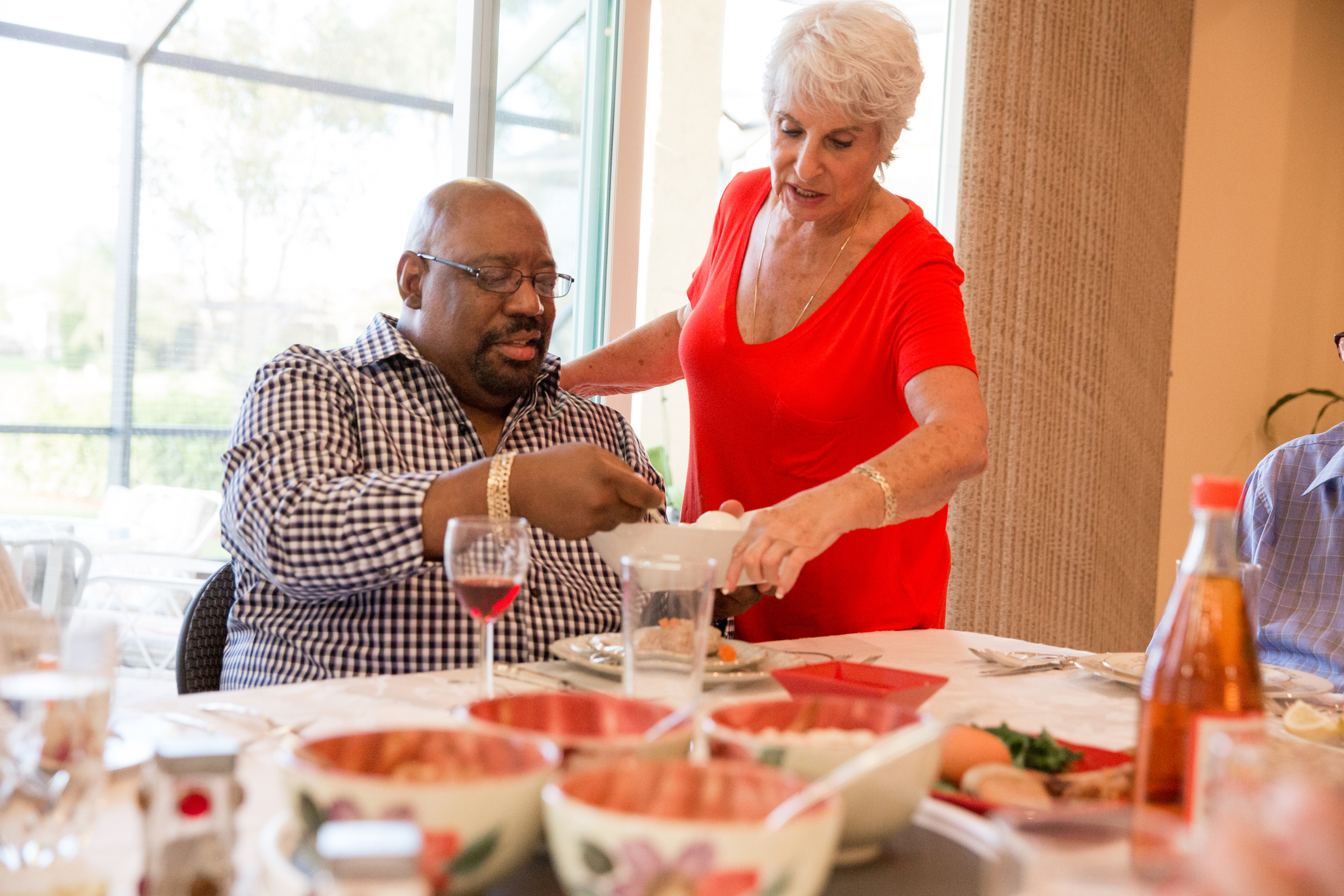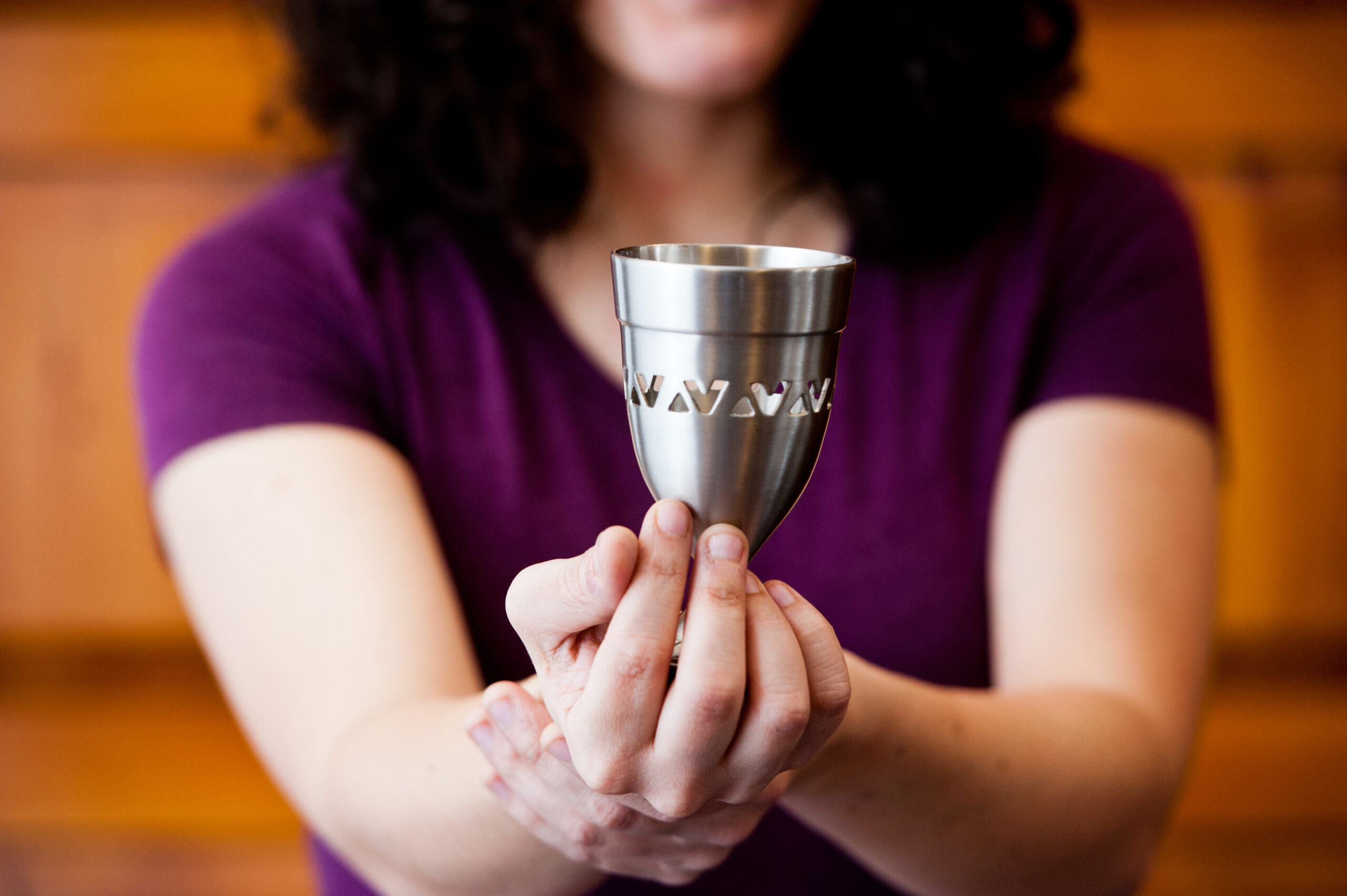In 1984, a group of eight young feminists at Oberlin College created “A Women’s Haggadah.” We studied traditional haggadah texts, the Reform and Conservative movement haggadot and the few women’s haggadot that we could find. While we were inspired by the intention of those early feminist haggadot, we felt that they lacked the kind of connection to Jewish tradition and Hebrew that we wanted for ourselves and our community. The more conventional and traditional haggadot, of course, were sexist in their language about people and God and they lacked any references to the women of the Exodus narrative that we have come to expect in liberal haggadot today.
There was great excitement and trepidation in the room as 200 women began the seder with these words: “We sit in here together in darkness, preparing to begin our women’s seder (with the lighting of the candles). In doing so, we are stepping into a familiar ritual: telling the story of our going out from Egypt. But tonight we are stepping into the unknown as well, for we are taking the risk of telling new stories and of finding old stories that were lost. We are inviting ourselves into a tradition which is our own and yet has not always made us feel welcome; and we are inviting Judaism to have a place in our lives.”
When we look at our haggadah, now, we are thrilled and amazed as we consider how much feminist scholarship and ritual innovation has transformed Judaism. However, two decades ago, it was not always so clear how to integrate Judaism with feminism. The challenge brought us tremendous growth but also great confusion, difficult loss, and sometimes deep alienation from family or upbringing.
One of the most challenging aspects of our process was to find a way, liturgically, to address homophobia in Judaism and to symbolically create a place for lesbians and gays in Judaism. We included in the haggadah a short story written by Susan Fielding (now Shifra Lilith Freewoman) about a young Jewish lesbian who is told by her hasidic rebbe that “there is as much place for a lesbian in Judaism as there is for hametz at the seder table” (hametz is bread and other food not kosher for Passover). The story was based on a New York City news clipping Susan had read about the reaction of a hasidic rebbe to lesbianism.
We loved the story and very much wanted it in our haggadah, but we struggled with how to respond to it ritually. We were a diverse group of women, in our sexual orientations, our religious backgrounds and practices, and our approaches to reconciling Judaism with feminism. Through much discussion, we clarified our concerns and values. We wanted to assert that there is a place for lesbians in Judaism, that we are, in fact, here. But we did not want to allow a homophobic rabbi or anyone else to define lesbians as unkosher, as outsiders. Furthermore, we wanted to have a kosher seder, to maintain the practice of eating only unleavened bread for Passover.
In a collective moment of inspiration, we came up with a beautiful solution to our dilemma. We decided to create a new seder plate, with an additional place on it, “a Makom (place) on our seder plate for all who have been condemned and excluded because of fear or ignorance.” In making this space to include the outcast, the haggadah explains, “we also make room in ourselves for more understanding. Through opening our minds, we pray that the distinctions we make between the sacred and the profane will grow out of intelligence and compassion.” (See the Makom ritual from the haggadah here.)
We chose this solution partly because Makom is also one of the names of God. Making a place for all is a holy act. We created a blessing to acknowledge and sanctify the act of making the place/Makom on the seder plate and at our seder: “Blessed are You Who helps us to discard fears, and gives us strength to repair mistakes; Who teaches us how to make distinctions, and enables us to make connections.”
Susannah Heschel (editor of On Being A Jewish Feminist) came to Oberlin soon afterward to speak about Jewish feminism. We were inspired by the work she was doing and discussed “A Women’s Haggadah” with her. She was obviously inspired by what we were doing. And thus began a fascinating process of ritual construction and reconstruction.
We built upon the power of the symbol of the seder plate, creating a ritual meant to highlight the need for inclusion of lesbians within Judaism while preserving the sanctity of Jewish ritual and the concepts of kadosh (holy) and chol (profane). Our ritual was misremembered (Heschel thought we actually placed hametz on the seder plate), the boundaries between kadosh and chol that we sought to preserve were blurred and a new ritual emerged.
Heschel put an orange on the seder plate to symbolize the inclusion for gays and lesbians but the clear and bold statement that she was trying to make became tempered as others adapted it to symbolize the inclusion of all women within Judaism. What emerged was a more inclusive (all women need to be included) and less threatening ritual statement that was more acceptable in some mainstream segments of the Jewish community.
In the haggadah section of Avadim Hayinu (We Were Slaves) we read “Whoever expands upon the story of the Exodus from Egypt is worthy of praise.” May this be our invitation to continually reconnect with our collective story as it has been told as well as to retell it it in new ways.
The other women involved in the creation of “A Women’s Haggadah” were: Susan Ann Fielding, Shari S. Garfinkel, Caroline Libresco, Amy B. Schechter, Miriam Bronstein, Rachel Lerner.












